|
At
9:10 p.m. on Aug. 25, 1951, Dr. W. I. Robinson, professor
of geology at the Texas technological College, stood in
the back yard of his home in Lubbock, Texas and chatted
with two colleagues. The other men were Dr. A. G. Oberg,
a professor of chemical engineering, and Professor W. L.
Ducker, head of the department of petroleum engineering.
The
night was clear and dark. Suddenly all three men saw a number
of lights race noiselessly across the sky, from horizon
to horizon, in a few seconds. They gave the impression of
about 30 luminous beads, arranged in a crescent shape. A
few moments later another similar formation flashed across
the night.
This
time the scientists were able to judge that the lights moved
through 30 degrees of arc in a second. A check the next
day with the Air Force showed that no planes had been over
the area at the time. This was but the beginning: Professor
Ducker observed 12 flights of the luminous objects between
August and November.
Some
of his colleagues observed as many as 10. Hundreds of nonscientific
observers in a wide vicinity around Lubbock saw as many
as three flights of the mysterious crescents in one night.
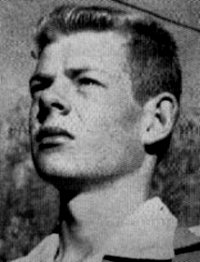
Carl Hart Jr.
On
the night of Aug. 30 an attempt to photograph the lights
was made by 18-year old Carl Hart Jr. He used a Kodak 35-mm
camera at f3.5, 1/10 of a second. Working rapidly, Hart
managed to get five exposures of the flights.
The
pictures exhibited by Hart as the result of this effort
show 18 to 20 luminous objects, more intense than the planet
Venus, arranged in one or a pair of crescents. In several
photographs, off to one side of the main flight, a larger
luminosity is visible... like a mother craft hovering near
its aerial brood.
The
photographs were taken at 5:30 pm and 10:37 pm. The three
Texas Tech professors examined the 18-year-old's photographs,
but could find no explanation for the photos. Witness Roger
Dods heard a slight rustling or whooshing sound as the objects
passed over head. He reported seeing them at 10:37pm. In
late September, a report on the Lubbock Lights reached the
Air Force.
The
Air Force examined the pictures in great detail and could
neither prove nor disprove their authenticity. Captain Edward
J. Ruppelt, the Air Force officer who became the first director
of Project Blue Book, traveled to Lubbock to investigate
the case. Ruppelt later wrote a very good book about his
experiences as a UFO investigator, called "The Report
on Unidentified Flying Objects."
It
was Ruppelt who interviewed an elderly rancher in Brownfield.
The rancher claimed to have heard the "unmistakable
call of the plover," a water bird with a one-foot wingspread
and an oily white breast that "could easily reflect
city lights."
But
game wardens said that the phenomenon could not have been
plovers (birds about the size of a quail) since these birds
never fly in flocks larger than three.
T.
E. Snyder, Jr. reported, "I saw something like people
have been seeing and it definitely was ducks." Although
not accounting for the unbelievable speed, a reflection
from the Westerner drive-in theater caused some ducks to
be illuminated. Everything seemed to point to flights of
birds as the explanation of the mysterious phenomenon that
came to be known as the "Lubbock Lights," and
yet there are those who disagree.
Witnesses
said they saw "dots" of lights flying in "U"
and "V" shapes, passing in two and three-second
intervals. The number of dots reported in the formations
ranged from eight to nine to 20 to 30. The lights appeared
in the northeastern part of the sky and proceeded in a straight
line to the southwest.
The
color of the lights was "about like the stars, only
brighter," while others said they were either a blue
or white with a slight yellow tinge to them. Others described
them as appearing "as a string of beads," moving
roughly in a semi-circle, and were "soft, glowing,
bluish-green."
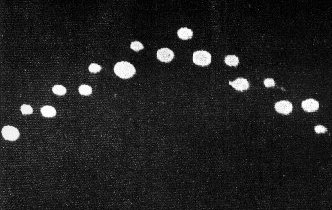
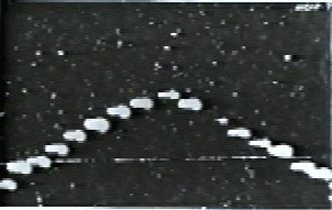
Dr.
J.C. Cross, head of Tech’s Department of Biology, examined
the 35mm photographs, and asserted, "It definitely
wasn’t caused by birds." In Matador, reports were
made of a "noiseless aircraft flying at a low altitude,
without aid of propellers or wings." They said it was
different from any aircraft they had ever seen.

Professors at Texas Tech who saw Lubbock Lights (left to
right), Dr. Oberg,
Prof. Ducker, and Dr. Robinson, discuss them with Dr. E.
L. George.
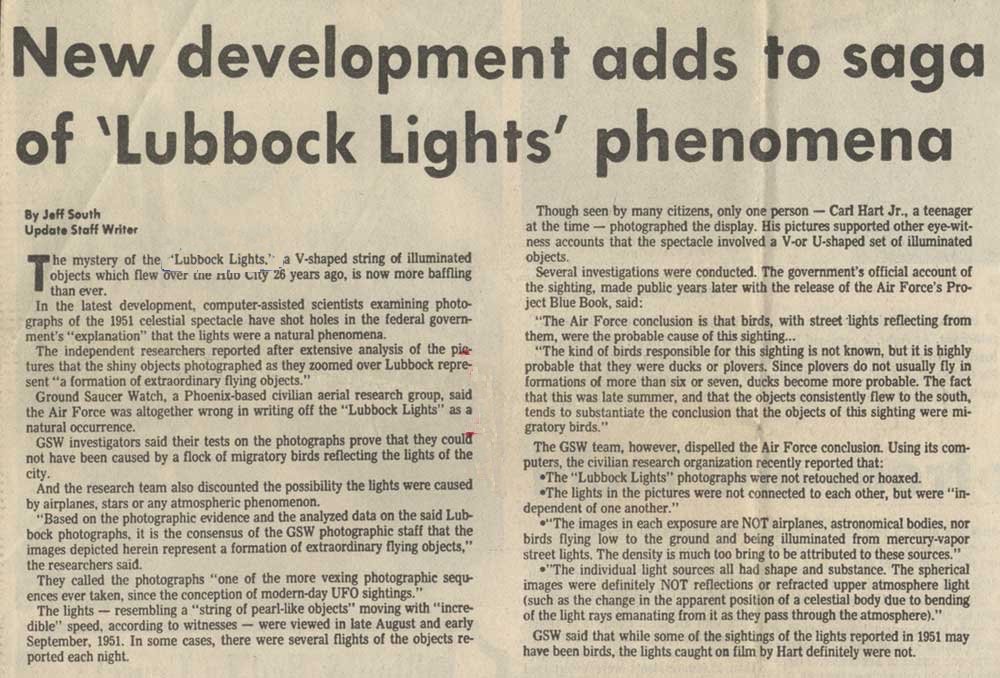
(click on article for readible size)
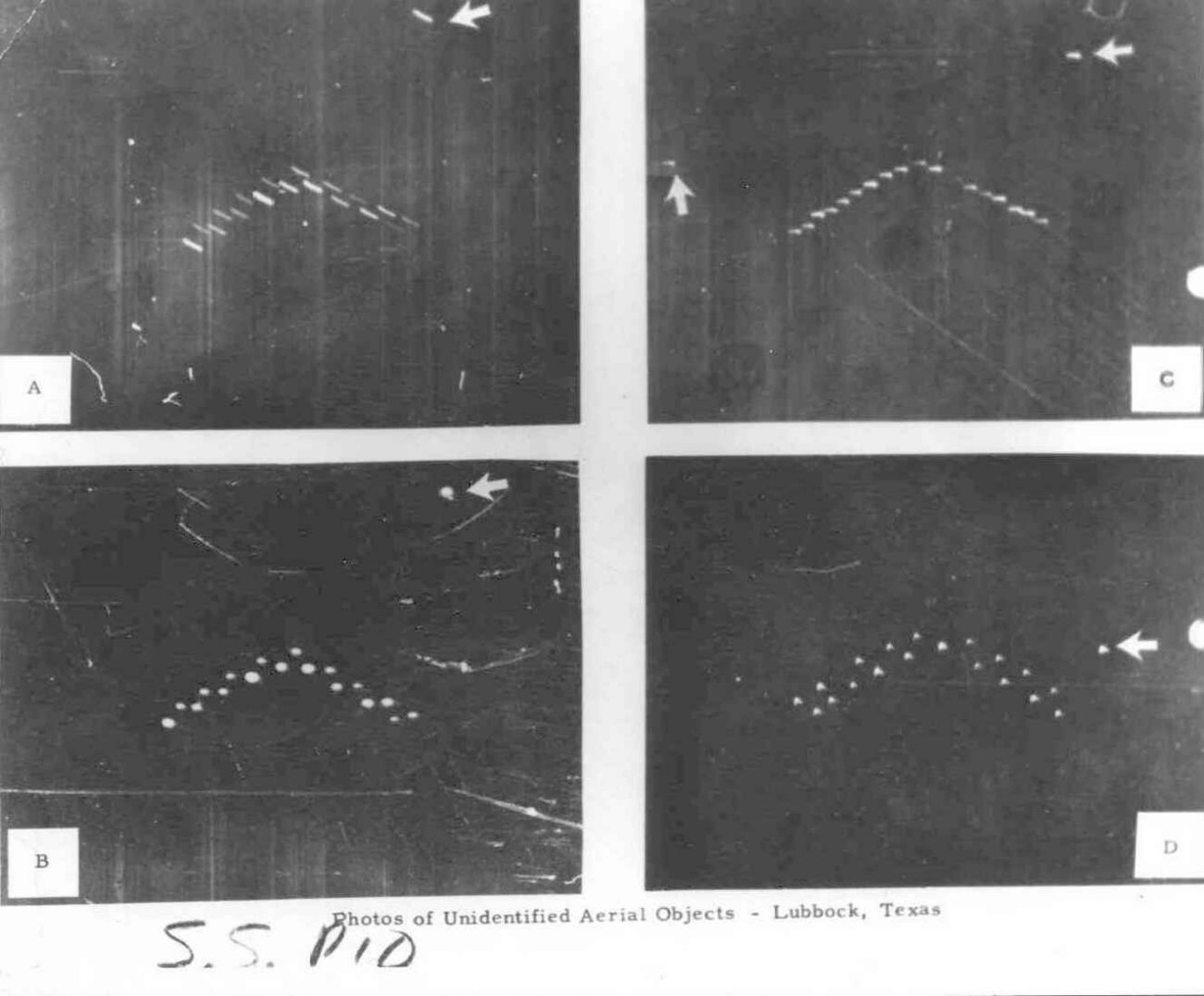
Project Blue Book file photograph (click on picture for
large size)
To
this day, there are those who contend that Lubbock was visited
by UFOs, while others say that it was merely a natural phenomenon.
No one really can say for sure, but as is stated in the
History of Lubbock, "Lubbock’s reputation is greater
in scientific circles for the Lubbock Light Sightings (and
flying saucers) than for any economic or civic reason."
B
J Booth
(this
article comprised of information and pictures from multiple
sources)
Source:
https://www.ufocasebook.com/lubbocklights.html |
